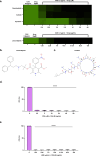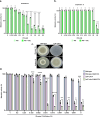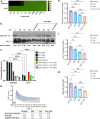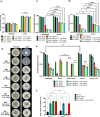Colistin enhances caspofungin antifungal efficacy against Aspergillus fumigatus by modulating calcium homeostasis and stress responses
- PMID: 40592863
- PMCID: PMC12214536
- DOI: 10.1038/s41467-025-60991-z
Colistin enhances caspofungin antifungal efficacy against Aspergillus fumigatus by modulating calcium homeostasis and stress responses
Erratum in
-
Author Correction: Colistin enhances caspofungin antifungal efficacy against Aspergillus fumigatus by modulating calcium homeostasis and stress responses.Nat Commun. 2025 Aug 15;16(1):7601. doi: 10.1038/s41467-025-62642-9. Nat Commun. 2025. PMID: 40817075 Free PMC article. No abstract available.
Abstract
Fungal infections cause more than 2.5 million deaths a year. Due to emerging antifungal drug resistance, novel strategies are urgently needed to combat life-threatening fungal diseases. Here, by screening a collection of 5297 compounds derived from three chemical libraries, we demonstrate that the antibacterial agent colistin (COL) can potentiate the fungistatic echinocandins caspofungin (CAS) and anidulafungin, as well as the structurally distinct cell wall targeting antifungal ibrexafungerp against Aspergillus fumigatus. Chemical and genetic screenings revealed that protein kinase C and the transcription factor SltA are involved in the mechanism of action of COL. SltA is essential for coping with calcium-limiting conditions, and the addition of calcium rescues COL-susceptibility. COL + CAS decreases A. fumigatus infection in human pulmonary cells, Galleria mellonella, and Caenorhabditis elegans. In summary, we demonstrate that the mechanism of COL as a synergizer of CAS against A. fumigatus is the disruption of the cell membrane permeability and calcium homeostasis.
© 2025. The Author(s).
Conflict of interest statement
Competing interests: L.E.C. is a co-founder and shareholder in Bright Angel Therapeutics, a platform company for development of novel antifungal therapeutics. L.E.C. is a Science Advisor for Kapoose Creek, a company that harnesses the therapeutic potential of fungi. The remaining authors declare no competing interests.
Figures









References
-
- Brown, G. D. et al. Hidden killers: human fungal infections. Sci. Transl. Med.4, 165rv13 (2012). - PubMed
-
- Denning, D. W. Global incidence and mortality of severe fungal disease. Lancet Infect. Dis.24, e428–e438 (2024). - PubMed
-
- Gnat, S., Łagowski, D., Nowakiewicz, A. & Dyląg, M. A global view on fungal infections in humans and animals: opportunistic infections and microsporidioses. J. Appl. Microbiol.131, 2095–2113(2021). - PubMed
-
- Guinea, J. et al. Pulmonary aspergillosis in patients with chronic obstructive pulmonary disease: incidence, risk factors, and outcome. Clin. Microbiol. Infect.: Off. Publ. Eur. Soc. Clin. Microbiol. Infect. Dis.16, 870–877 (2010). - PubMed
MeSH terms
Substances
Grants and funding
LinkOut - more resources
Full Text Sources

